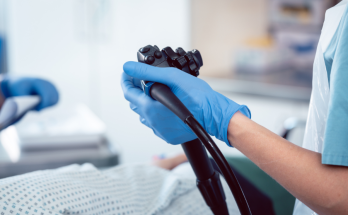Staying active is part of life in Singapore, whether it is running around the neighbourhood, training for a marathon, or kicking a ball at the weekend. Yet when bunion pain starts to creep in, even lacing up your trainers can feel like stepping on hot coals. The good news is that bunion treatment does not mean hanging up your sports shoes for good. With the right steps, you can keep moving without limping off the field.
Why Bunions Make Sports Tricky
A bunion is more than a bump on the side of the foot. It shifts the big toe out of place, creating pressure that worsens during movement. For athletes and casual players alike, bunion pain shows up when running, jumping, or even standing for long periods. The misalignment causes rubbing inside the shoe, swelling around the joint, and a loss of stability that makes sport less enjoyable.
Sports that demand quick pivots such as basketball or tennis tend to aggravate bunions. Runners may also notice uneven wear on shoes due to altered foot mechanics. Without proper bunion treatment, these problems can push people into avoiding the activities they love.
Non-Surgical Ways to Keep Playing
Many athletes start with simple changes before thinking about surgery. Wider shoes with soft uppers reduce friction and give the toes room to move. Toe spacers and padded supports keep pressure away from the bunion during training sessions. These small adjustments are not miracles, but they ease bunion pain enough to get through a jog or game.
Strength and flexibility exercises also make a difference. Moves that stretch the calf and strengthen the arch help redistribute weight more evenly across the foot. For some, physiotherapy tailored to sports routines supports recovery and prevents further irritation. With consistency, these habits make bunion treatment more effective in everyday life.
When to Seek Expert Help
There are times when supports and exercises are not enough. If swelling grows worse or bunion pain interrupts sleep, it may be time to see a specialist. Meeting an orthopaedic surgeon in Singapore can clarify whether surgery is the next step. Surgeons look at how severe the deformity is, how much it affects sports performance, and whether other joints in the foot are also suffering.
Many patients worry that surgery means giving up their hobbies forever. In reality, most return to sport after recovery, often moving more freely than before. By working with an orthopaedic surgeon in Singapore, athletes get a clear plan that balances healing with their desire to stay active.
Surgery and Recovery for Athletes
Bunion surgery is not a single method but a family of procedures. Some involve shaving off the bump, while others realign bones and ligaments. The type chosen depends on the severity of the bunion and the patient’s activity goals. While recovery does take weeks, structured rehabilitation helps athletes ease back into training without rushing.
Physical therapy often begins with gentle range-of-motion work, later progressing to balance drills and light cardio. Returning to sport too soon risks setbacks, but sticking to the surgeon’s plan means a higher chance of long-term success. Working with an orthopaedic surgeon in Singapore ensures the treatment is tailored for both healing and performance.
Sports-Friendly Habits After Treatment
Once bunion treatment has been completed, the game does not stop. Maintaining good footwear habits is essential. Shoes that match the sport, have adequate cushioning, and offer a roomy toe box prevent new issues from forming. For runners, replacing worn shoes regularly avoids uneven stress on the recovering joint.
Warm-up and cool-down routines also protect the feet. A few minutes of stretching the toes and calves before activity reduces strain, while icing after intense play controls swelling. Athletes who keep up these habits are less likely to face recurring bunion pain.
The Balance Between Activity and Care
Sports are meant to be fun, not painful. Bunions complicate the picture, but they do not end the story. With sensible shoe choices, exercise routines, and medical support, staying active is still possible. Athletes who pay attention to their feet today can look forward to many more matches, runs, and workouts tomorrow.
If bunions have been sidelining your sports, it may be time to take action. Contact Specialist Orthopaedic Centre to find out how bunion treatment can help you get back in the game without the ache.




